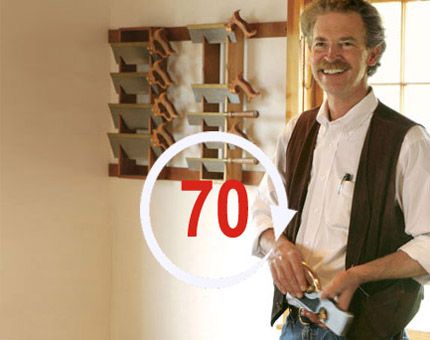
This week on Shop Talk Live, Asa Christiana sits down with tool maker Thomas Lie-Nielsen.
STL 70: Lie-Nielsen Live
![]() This week on Shop Talk Live, Asa Christiana travels to coastal Maine for an interview with one of woodworking’s favorite tool makers: Thomas Lie-Nielsen. Sadly, Asa’s trip resulted in a trunk-load full of fancy boutique tools, a resulting missed mortgage payment and, well, you get the picture. We love hand tools!
This week on Shop Talk Live, Asa Christiana travels to coastal Maine for an interview with one of woodworking’s favorite tool makers: Thomas Lie-Nielsen. Sadly, Asa’s trip resulted in a trunk-load full of fancy boutique tools, a resulting missed mortgage payment and, well, you get the picture. We love hand tools!
Plus, your woodworking questions answered.
Every two weeks, a team of Fine Woodworking staffers answer questions from readers on Shop Talk Live, Fine Woodworking’s biweekly podcast. Send your woodworking questions to shoptalk@taunton.com for consideration in the regular broadcast!
Click on the link at left to listen to the podcast, or catch it in iTunes. Remember, our continued existence relies upon listener support. So if you enjoy the show, be sure to leave us a five-star rating and maybe even a nice comment on our iTunes page. And don’t forget to send in your woodworking questions to shoptalk@taunton.com.

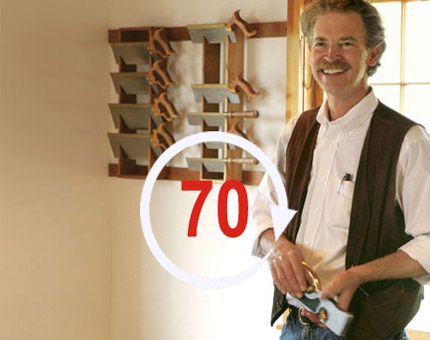
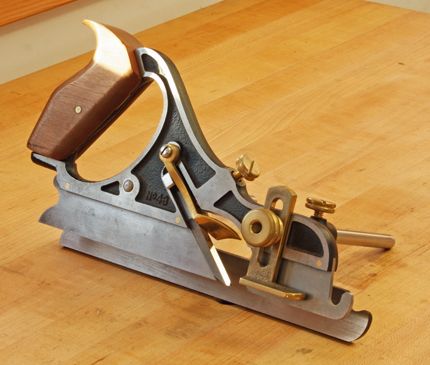
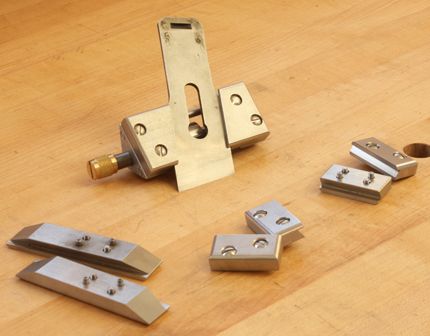

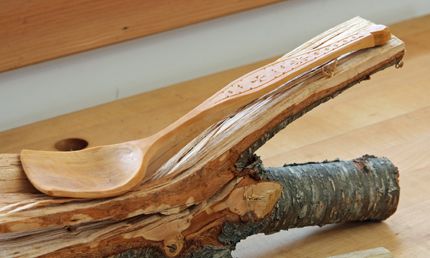






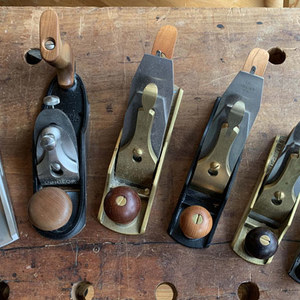
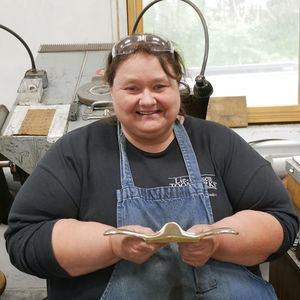
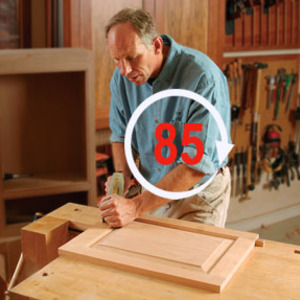
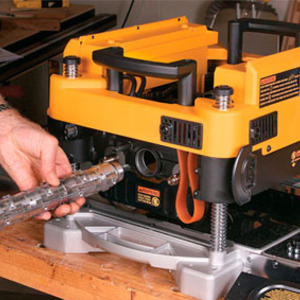











Comments
I listened in entirety to the interviews with Robin Lee of Lee Valley / Veritas and Thomas Lie-Nielsen of Lie-Neilsen Toolworks and I must say I found the former far more interesting, inspiring and informative.
I've long had respect for both companies, but I now realize how far ahead Lee Valley / Veritas is in their entire approach to research, marketing, production and costumer awareness.
The interviews were simply worlds apart. Robin Lee seemed incredibly thoughtful and insightful. Thomas Lie-Neilsen just seemed way too full of himself. Interesting when you asked his to compare his product to Lee Valley / Veritas he completely ignored the question.
Asa, you nailed it at the end with your comment about computer / IT workers and the appeal of handtool woodworking. As a programmer myself, I am completely drawn to hand tool work, and really have very little interest in power tool woodworking. Everything I do all day long is virtual and automated. It's a huge change of pace to get ahold of some wood and use my own hands to move tools across it and make something fully by hand. A totally different part of the brain is activated and it's very therapeutic.
I just now listened to this STL, and then and went to have an online look at the Lie-Nielsen 51 shooter plane. It raises a question I'd like to put to the STL gang: to whom (and why) would you recommend this $500 plane?
It's a serious question, grounded in my suspicion that the breathless worship of great handmade, but specialized hand tools like those from Lie-Nielsen and Lee Valley actually turns young people away from woodworking by making them think they can't afford good enough tools. Surely if you had even a couple thousand dollars (which can be a lot for young folks just starting out) to spend this year on woodworking, you wouldn't drop $500 for a shooting plane. Who, in fact should? You'd have to be doing a lot of work at the shooting board for such a purchase to pay off compared to using a solid, general purpose bench plane and a good shooting board.
In reality, I think the 51 is a Stirling example of what I'd call "tool porn." A fetishizing of over the top mass, bronze castings, and thousandth of an inch tolerances machined into "aircraft grade aluminum", and the like. Yes, good, well built tools are important, but as in all things, one can go completely over the top on this, and I think in some respects Lie-Nielsen (and some other boutique tool companies) has done so.
I have to disagree with ‘Toothless’. I found BOTH Robin and Tom inspiring in their passion for the craft. Neither man seems to be ‘full of himself’. Neither company is ‘ahead’ of the other in my opinion. Instead, it’s more correct to say that each company has a different approach to making tools, and the craft benefits as a result.
One company tries to make the best possible version of tools inspired by traditional designs. The other company takes more of a ‘clean sheet’ approach to their designs. Both approaches have strengths and pitfalls.
A new design can bring improvements, but traditional designs can have many design elements which have been slowly refined over many years, and tend to be very good for reasons that are not always obvious.
In my experience, some Veritas tools are superior to ‘traditional’ Lie Nielsen counterparts. Other Veritas tools bring innovation only at the expense of superior aspects of the traditional design.
For example, one Veritas tool I recently used has an innovation on a blade advance mechanism. That's good. However the lever cap screw on the same tool used an ‘ordinary' machine screw instead of a “traditional” low-allowance thread. In practice ]the ‘ordinary’ veritas screw will move slightly when tension is removed (such as when sharpening the blade). The traditional thread will not. I like the innovation, but in this case the step forward was accompanied by a step back. It's not a bit deal, but there was already a solution that's simple, and as old as dirt.
My hand tool chest sees a carefully selected mix of tools from both companies.
I have to disagree with ‘Toothless’. I found BOTH Robin and Tom inspiring in their passion for the craft. Neither man seems to be ‘full of himself’. Neither company is ‘ahead’ of the other in my opinion. Instead, it’s more correct to say that each company has a different approach to making tools, and the craft benefits as a result.
One company tries to make the best possible version of tools inspired by traditional designs. The other company takes more of a ‘clean sheet’ approach to their designs. Both approaches have strengths and pitfalls.
A new design can bring improvements, but traditional designs can have many design elements which have been slowly refined over many years, and tend to be very good for reasons that are not always obvious.
In my experience, some Veritas tools are superior to ‘traditional’ Lie Nielsen counterparts. Other Veritas tools bring innovation only at the expense of superior aspects of the traditional design.
For example, one Veritas tool I recently used has an innovation on a blade advance mechanism. That's good. However the lever cap screw on the same tool used an ‘ordinary' machine screw instead of a “traditional” low-allowance thread. In practice ]the ‘ordinary’ veritas screw will move slightly when tension is removed (such as when sharpening the blade). The traditional thread will not. I like the innovation, but in this case the step forward was accompanied by a step back. It's not a bit deal, but there was already a solution that's simple, and as old as dirt.
My hand tool chest sees a carefully selected mix of tools from both companies.
Log in or create an account to post a comment.
Sign up Log in